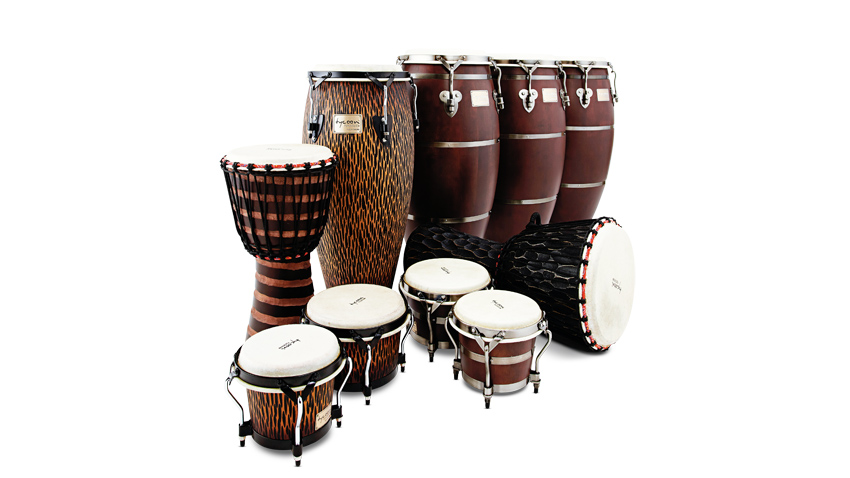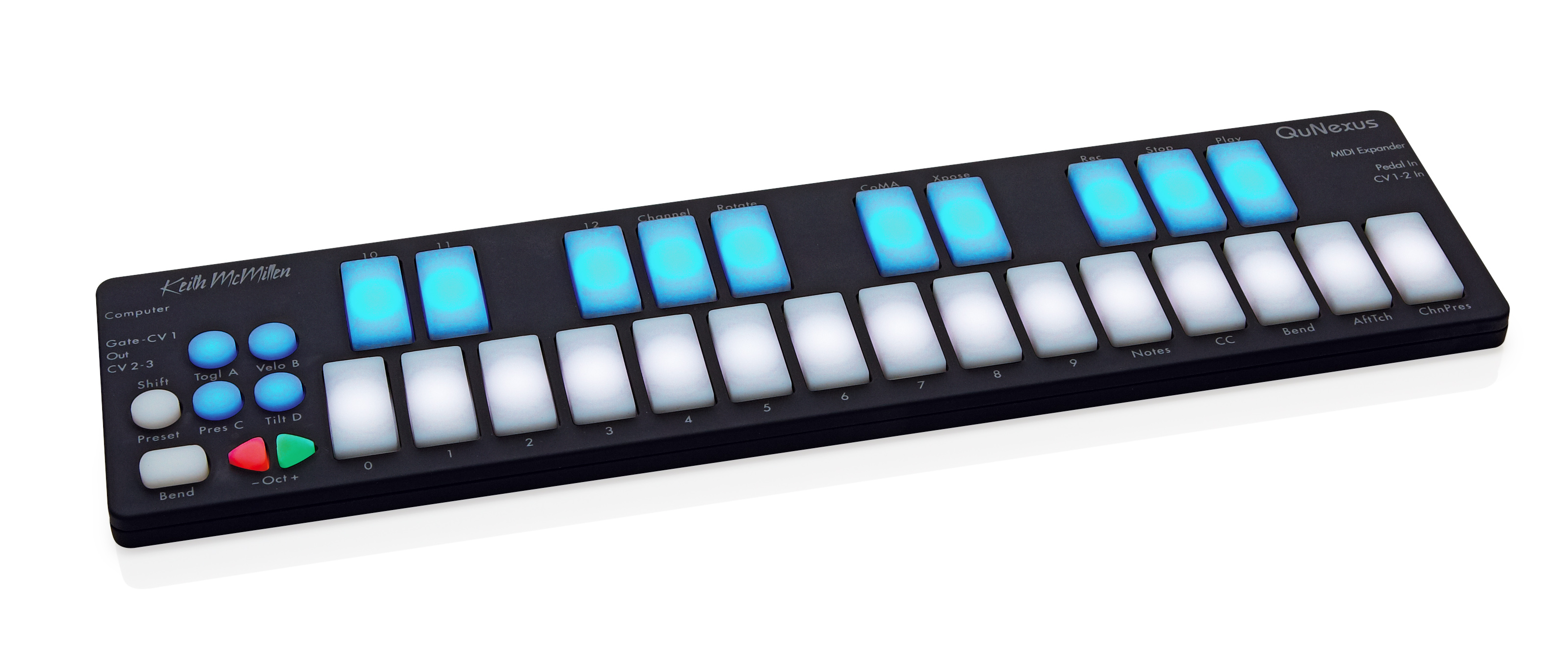The A to Z of computer music: P
From parallel processing to pre/post-fader, our glossary continues

Point by point, we peruse everything from pink noise to peaks in our expert glossary of all things production.
Parallel processing
A mixing and sound design technique whereby a signal is duplicated (either via mixer bussing, copying of the part onto a second track in a DAW, or inside a plugin with appropriate capabilities) and one instance is processed with an effect.
Compression is the classic usage, and by balancing the compressed and uncompressed parts, to achieve the desired blend of compressed character and uncompressed punch. Parallel compression is also know as 'New York style compression'. These days, many new dynamics plugins feature a wet/dry mix control, so parallel compression can be applied without the need to run two signals.
Patch cord
A short cable used to connect modules in a modular synth or points on a patchbay. In the software studio, virtual patch cords are largely eschewed in favour of modulation matrices and 'behind the scenes' signal routing schemes, although some software represents them literally - Propellerhead Reason, most famously.
Peak
In literal terms, the peak in an audio signal is the highest point reached by its waveform, although the word is also often just used to refer to any notably high point, not just the highest.
The peak is a useful reference for dynamics processing - setting a limiter to reduce peaks to a particular absolute level, for example - and signal levelling in a mixer, where peak metering gives a visual indication of the signal level at any given moment, making it easy to prevent it exceeding 0dBFS.
Percussion
Any instrument that's played by striking with the hand or a stick/beater/brush/hammer/ mallet, shaking or scraping is a percussion instrument - drums and cymbals of all kinds, xylophone, woodblock, guiro, cabasa, caxixi... even the piano, strictly speaking, since its strings are excited by hammers.
Get the MusicRadar Newsletter
Want all the hottest music and gear news, reviews, deals, features and more, direct to your inbox? Sign up here.

Phantom power
Unlike passive dynamic microphones, the active electronics of more sensitive condenser mics require a power source to operate. Since the mic's only input is via an XLR socket, this power needs to come from the receiving equipment to which the mic is connected, via the same cable that carries the audio signal. So, any mixer, preamp or audio interface worth its salt will feature 48V phantom power (so called as it's 'invisible' to dynamic mics, which ignore it).
Phase
The phase of a cyclical wave is, essentially, its position in time, described in degrees, with 360 degrees being a complete cycle. For example, 'rotating' a sine wave by 180 degrees 'pushes it along' the timeline by half its cycle length, turning peaks into troughs and vice-versa.
Adjusting the phase of a synth waveform can affect the attack of the sound, and adjusting an LFO's phase will alter its 'start point'. Phase is a particularly important issue in mixing, where multiple signals recorded from the same source need to be kept in phase in order to prevent phase cancellation (see below).
Phase cancellation
When two or more signals recorded from the same source are out of phase (see above), phase cancellation is the result. This can range from a mild 'hollowing' of the sound to complete silence when two signals are 180 degrees out of phase. Any multi-miked sound source has the potential to suffer from phase cancellation, so that includes drum kits, guitars (multiple cabs/ mics and perhaps a DI too), room mic pairs, etc.
Most mixers (real and virtual) feature so-called phase invert switches, but these actually invert the polarity, flipping the whole waveform on its horizontal axis, turning it 'upside down'. This can be useful in certain miking situations, such as mics placed on the top and bottom of a drum, which will naturally move in 'opposite' directions when the drum is struck - flipping the polarity of one is necessary to avoid phase cancellation.
Other techniques for correcting phase issues include manually dragging one of the offending audio parts left or right a touch, and using dedicated phase rotation processors.
Physical modelling
A synthesis technique in which the physical properties of an instrument (string, skin, resonant chamber, etc) and the object used to play it (drumstick, plectrum, hand, etc) are calculated using mathematical models in order to achieve a realistic simulation. Various parameters of the instrument and the 'exciter' are usually adjustable - eg, string length, drumhead tension, tube width, stick material and so on - and the upper and lower limits of these parameters often range into the unreal, enabling the creation of gigantic drums or absurdly small wind instruments, for example.
Ping-pong delay
A type of stereo delay plugin that alternates its 'taps' between left and right channels. Being a very 'standard' effect, ping-pong delay can be found in the stock effects library of most DAWs.
Pink noise
White noise contains all frequencies at the same power level; pink noise, on the other hand, is a randomly generated signal with the power reducing as the frequency increases, leading to a sloping spectrum with equal power in each octave. Some synths feature pink among the colours available to their noise oscillators.
Pitchbend
Smoothly sweeping the pitch of a synth or sampler up or down, either manually using a MIDI keyboard pitch wheel, or automatically via automation. Generally, pitchbend affects the entire output of an instrument, but there are a few instruments and controllers available that support polyphonic pitchbend, including Camel Audio's Alchemy soft synth and KMI's QuNexus (below).

Pitchshift
The process of raising or lowering the pitch of an audio signal by a fixed musical interval (usually represented in cents and semitones), either in a DAW or sample playback instrument, or via a dedicated plugin effect. Although digital technology enables the pitch and duration of samples to be controlled independently, some tape and vinyl emulation plugins offer old-style pitchshifting/timestretching, whereby the playback speed of the 'tape' or 'vinyl' is increased or decreased in order to change the pitch.
Pitchshifting shouldn't be confused with frequency shifting, which raises or lowers all included frequencies by the same amount, rather than by the same ratio.
Plugin
A piece of software that 'plugs into' a host application, extending its functionality in some way. In music software, there are three types of plugin: instruments, audio effects and MIDI effects. Instruments are triggered with MIDI and they output audio, while plugin effects process an input audio signal and output the results. Plugin instruments and effects include virtual synthesizers, samplers, compressors, EQs, reverbs, delays, etc, either emulating real-world devices or completely original. MIDI effects plugins, meanwhile, modify a MIDI stream - arpeggiators, chord generators, etc.
Due to its cross-platform compatibility, the most common audio plugin format by far is Steinberg's VST (Virtual Studio Technology), but Apple's Mac-only AU (Audio Units) comes a close second, followed by Avid's RTAS (Real Time AudioSuite) and AAX (Avid Audio Extension), with MOTU's MAS (MOTU Audio System) and various Linux-friendly others (LADSPA, DSSI et al) bringing up the rear. Oddly, there's no accepted standard format for MIDI plugins, with individual DAWs supporting only their own proprietary systems.
Polyphony
A measure of the number of simultaneous voices playable on a given synthesizer or sampler. If a synth is '8-voice polyphonic', for example, it can play up to eight voices at the same time. If a ninth voice is played without releasing one of the first eight, it will replace one of the other voices (known as 'note stealing') or simply not play at all, depending on the instrument and its settings.
Portamento
Also known as glide, activating the portamento function on a synth means that one note's pitch will smoothly slide up or down to the pitch of the next, instead of just 'jumping' from one discrete pitch to another. Depending on the synth in question, the time that this slide takes could be adjustable, fixed or scaled (determined by the distance of the slide).
Pre/post-fader
The auxiliary send points on a mixer can be positioned pre- or post-fader - ie, before or after the channel volume fader. Pre-fader means that the level you set on the volume fader has no effect on the level of the send, while post-fader means that changing the volume of the channel also changes the gain of the signal going into the send.
Pre-fader sends are useful for setting up monitor mixes in the studio, where the musicians being recorded won't want their monitoring levels to be affected by changes made to the control room mix. When the band have gone home, though, post-fader can be considered 'default', as the mix engineer will generally want channel volume changes to be reflected in their effects sends.
Preamp
Short for 'preamplifer', a preamp is an electronic amplifier used to boost the very low- level signal from a guitar or microphone up to the 'line' level required by a mixer or audio interface for effective monitoring and recording. While all mixers and modern audio interfaces have preamps built in, there are also dedicated units available at a huge range of price points (up to many thousands of pounds), including vintage classics desired for their particular sound, and ultra-transparent models designed to apply as little colouration as possible.
Pulse width modulation (PWM)
The on-the-fly adjustment of the cycle width (expressed as a percentage) of a synthesizer's pulse (square) wave via a modulation source (typically an LFO) in order to introduce a thickening effect.
Punch in/out
The overwriting of a section of a recording between a predetermined start (punch in) and end (punch out) point, to replace a mistake or revise said section, leaving the rest of the recording untouched. In a DAW, punch in and out can be triggered manually in real-time (via a MIDI controller or key command), or automatically by setting the in and out points on the timeline.


Computer Music magazine is the world’s best selling publication dedicated solely to making great music with your Mac or PC computer. Each issue it brings its lucky readers the best in cutting-edge tutorials, need-to-know, expert software reviews and even all the tools you actually need to make great music today, courtesy of our legendary CM Plugin Suite.










